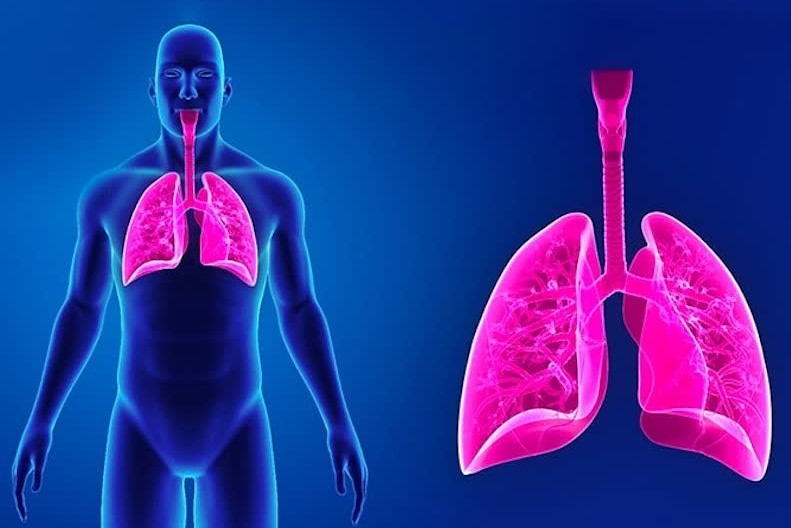
Pneumothorax and pneumomediastinum: rescuing the patient with pulmonary barotrauma
Let’s talk about pneumothorax and pneumomediastinum: barotrauma is tissue damage caused by a related change in gas pressure in body compartments
Factors that increase the risk of pulmonary barotrauma include certain behaviours (e.g. rapid ascent, holding one’s breath, breathing compressed air) and pulmonary disorders (e.g. chronic obstructive pulmonary disease).
Pulmonary barotrauma: pneumothorax and pneumomediastinum are common manifestations
Patients requiring neurological examination and imaging of the chest.
Pneumothorax is treated.
Prevention consists of decreasing risk behaviours and consulting high-risk divers.
Overdistension and alveolar rupture may occur when holding one’s breath (usually while breathing compressed air) during ascent, especially during rapid surfacing.
The consequence may be a pneumothorax (inducing dyspnoea, chest pain and reduced breath sounds from the ipsilateral lung) or pneumomediastinum (causing chest tightness, neck pain, pleuritic pain that may radiate to the shoulders, dyspnoea, cough, hoarseness and dysphagia).
Pneumomediastinum may cause crepitus in the neck, due to concomitant subcutaneous emphysema, and rarely a precordial crepitus during systole (Hamman’s sign).
Air can sometimes bind fluid in the peritoneal cavity (falsely suggesting a bowel rupture and the need for laparotomy), but usually does not cause peritoneal signs.
Hypertensive pneumothorax, although rare in barotrauma, may cause hypotension, turgor of the neck veins, hyperresonance on percussion and, as a final finding, tracheal deviation.
Alveolar rupture may allow air to enter the pulmonary venous circulation resulting in arterial gas embolism.
During very deep apneas, compression of the lungs during descent can rarely induce a reduction in lung volume below the residual volume, causing mucosal oedema, vascular congestion and haemorrhage, which manifest clinically as dyspnoea and haemoptysis during ascent.
Diagnosis of pulmonary barotrauma
- Clinical evaluation
- Chest imaging
Patients require a neurological examination to investigate signs of cerebral dysfunction secondary to arterial embolisation.
Chest X-ray is performed to detect signs of pneumothorax or pneumomediastinum (radiolucent band between pleural leaflets along cardiac margins).
If the chest X-ray is negative but there is a strong clinical suspicion, then a CT scan of the chest may be more sensitive than the standard X-ray, and therefore diagnostic.
Ultrasonography may also be useful for the rapid bedside diagnosis of pneumothorax.
Pneumoperitoneum without rupture of a viscera should be suspected when pneumoperitoneum is present without peritoneal signs.
Treatment of pulmonary barotrauma
- 100% oxygen
- Sometimes thoracostomy
A suspected hypertensive pneumothorax is treated with decompressive puncture followed by thoracostomy.
If a small pneumothorax is present (e.g., 10 to 20%) and there are no signs of haemodynamic or respiratory instability, it may be resolved by administering high flows of 100% oxygen for 24-48 hours.
If this treatment proves ineffective or if a more significant pneumothorax is present, pleural drainage is performed (using a pigtail catheter or a small chest tube).
No specific treatment for pneumomediastinum is required; symptoms usually resolve spontaneously within hours or days.
After a few hours of observation, most patients can be treated on an outpatient basis; high flows of 100% oxygen are recommended in these patients to accelerate the reabsorption of gases on the lung surface.
Rarely, mediastinotomy is required to resolve a hypertensive pneumomediastinum.
Pulmonary barotrauma: prevention
Prevention is the best treatment for pulmonary barotrauma.
Correct timing and techniques are essential.
Patients at high risk of pneumothorax during diving include those with pulmonary bullae, Marfan syndrome, chronic obstructive pulmonary disease or a history of spontaneous pneumothorax.
Such individuals should not dive or work in areas with high air pressure.
Patients with asthma may be at risk for pulmonary barotrauma, although many can dive safely after appropriate evaluation and treatment.
Patients with pneumomediastinum after a dive should be referred to a specialist in underwater medicine for risk assessment in future dives.
Read Also:
Emergency Live Even More…Live: Download The New Free App Of Your Newspaper For IOS And Android
Tracheal Intubation: When, How And Why To Create An Artificial Airway For The Patient
What Is Transient Tachypnoea Of The Newborn, Or Neonatal Wet Lung Syndrome?
Traumatic Pneumothorax: Symptoms, Diagnosis And Treatment
Diagnosis Of Tension Pneumothorax In The Field: Suction Or Blowing?


